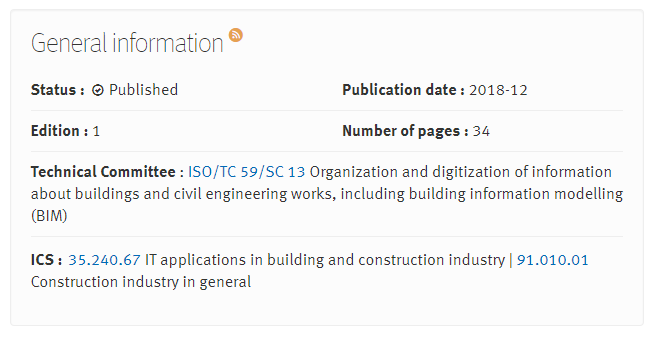
ISO 19650: The Key Points & Based on British Standards
ISO 19650 is a set of international BIM standards developed by the British Standards Institute (BSI).
So far the set is made up of two standards IS0 19650-1 and ISO 19650-2. These two standards are based upon the UK 1192 series. Namely BS 1192 and PAS 1192-2 respectively.
A Level Playing Field
The ISO 19650 standard is being developed to aid the managing of information over the whole life cycle of an asset using BIM. It is hoped that the standard will help remove barriers to collaborative working and tendering across borders. In turn, allowing both domestic and transnational operations the ability to gain the benefits of a BIM without reliance on a British orientated standard.
It is believed that forming an international suite of standards will create a level playing field for companies to work together or compete against one another. Reducing the potential of disjointed workflows within an increasingly globalised sector.
It is hoped that the standard will help remove barriers to collaborative working and tendering across borders.
ISO 19650 Based On British Standards
The contents of ISO 19650-1 and ISO 19650-2 is in alignment with the BS1192 and PAS 1192-2. It was developed in accordance with business management standard ISO 9001, incorporating the plan-do-check-act principle, as well as ISO 55000.
However, in order to resolve ambiguity across certain regions consideration was given to vocabulary, and it is here that we see the biggest differences between ISO 19650 and BS/PAS 1192.
As an example when developing ISO 19650, the first step was said to be the removal of “UK-isms”. We can see this in the ISO/DIS 19650 draft document where reference to the UK Government’s strategy is noticeably removed along with other UK familiar terminology that was deemed to be ambiguous.
Don’t miss this chance to see REBIM® in action. Book a free demo today and discover how it can transform your business.
A notable example includes reference to “Level 2” BIM, which will now be referred to as “Stage 2” BIM in order to avoid ambiguity in certain regions already using the concept of levels in reference to other aspects of work.
Other notable changes include the collective naming LOI/LOD (level of information/detail) as “level of information need”; the changing of “employer’s” information requirements (Commonly abbreviated to project-EIR) to “exchange” information requirements; and reference to PIP (project implementation plan) as “delivery team mobilisation plan”.

National Annex - Region-specific Requirements
While ISO 19650 represents the internationalisation of BS/PAS 1192, it was inevitable that international consensus on all requirements set out within ISO 19650 would not be possible.
This proved to be the case particularly when it came to providing templates for standardised naming conventions and codifications. The result is the creation of a supporting National Annex to accompany ISO 19650. Within the National Annex document is region-specific requirements, that take into account existing arrangements of particular regions.
The idea is that ISO 19650 sets out the requirements, while the National Annexes state the specific information about which standards must be used to meet the requirements in a particular region.
As an example, ISO 19650-2 sets a requirement that information should be classified, while the UK National Annex states the classification system to be used is UniClass 2015. This differs from other regions such as the United States where the US National Annex states the classification system to be used is Omniclass.
The inclusion of National Annexes is an aspect of the ISO 19650 that may prove to draw criticism as it could be argued that its inclusion represents a lack of common approach. Companies that work in different regions will as a still need to comply with local standards.
While we should see some benefit of a standard that has been put together by the UK leading bodies (BSI, UK BIM Alliance, CDBB), from a principle and concept point of view.
In terms of BS/PAS 1192, it is worth noting that misinterpretations and contradictions are apparent due to what many consider a lack of collaboration between the main bodies. Issues that have hopefully be resolved by ISO 19650, a standard developed on the experience of BS/PAS 1192.
ISO19650 Release Date & Publication of 1st edition
The below snapshot is taken from iso.org , it provides the initial publication date of the first edition and you can access the pdf by clicking here
